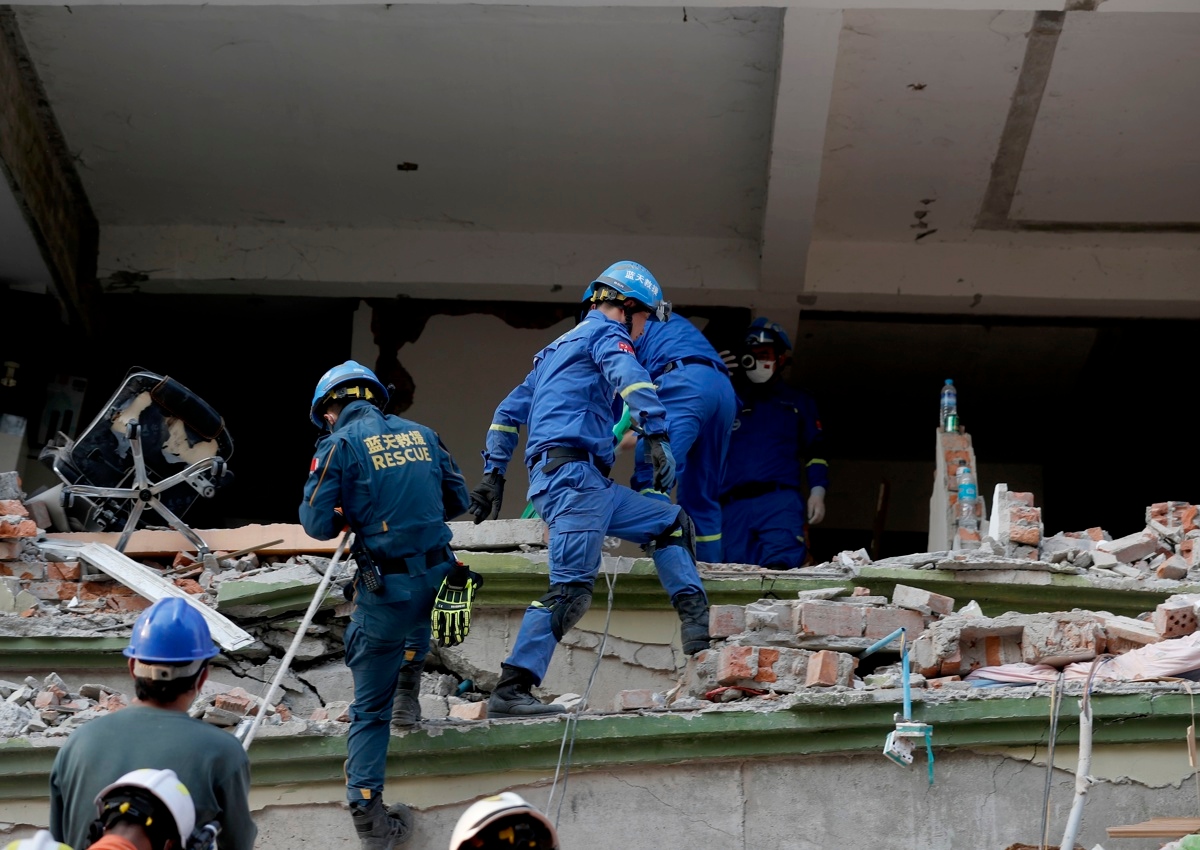Search and rescue operations in Myanmar (Burma) have entered a critical stage this Monday, 72 hours after the powerful earthquake that shook the center-north of the country last Friday. According to official figures from the military junta, at least 1,700 people have died and more than 3,400 have been injured, although independent sources warn that the death toll could exceed 3,000.
The earthquake, measuring 7.1 on the Richter scale, had its epicenter in the Sagaing region, in the northwest of the country. It is a mountainous and difficult to access area that has been the scene of intense armed conflict between the army and ethnic rebel groups. Dozens of smaller aftershocks have continued to shake the region, complicating rescue and damage assessment efforts.
Miraculous rescues in Mandalay

In the city of Mandalay, Myanmar’s second largest city, several hopeful rescues were reported on Monday.
According to the military-controlled state broadcaster MRTV, a Chinese rescue team managed to save a five-year-old boy, a pregnant woman and a 29-year-old woman who had been trapped for more than 60 hours under the rubble of a collapsed building.
Another woman was also reportedly rescued from the Great Hall Hotel in the same city.
All were transported to nearby hospitals for medical attention.
However, these cases are the exception in the midst of a large-scale humanitarian emergency, marked by lack of access, limited resources and little transparency on the part of the regime.
Restricted access to devastated areas

International humanitarian organizations have reported serious difficulties in entering the most affected areas.
The airports in Mandalay and Naipyidó, the capital, remain closed due to damage to runways and basic infrastructure.
In Sagaing, a region known for its resistance to military rule, the situation is even more serious.
The Myanmar Red Cross indicated that about 70% of the city has been destroyed, but access remains extremely limited, in part because this area is under the control of rebel militias rather than the Army.
Political crisis aggravates the emergency

Since the military coup of 2021, Myanmar, known in English as Burma, has been living in a state of constant political instability.
The military junta, led by Min Aung Hlaing, has faced armed resistance from ethnic groups and the National Unity Government (NUG), an exiled administration that claims to be the country’s legitimate authority.
The NUG on Monday accused the armed forces of carrying out at least 11 bombings in different regions of the country since the earthquake, despite having offered a temporary truce to facilitate the delivery of humanitarian aid.
This situation further complicates rescue efforts, as many areas affected by the earthquake are also zones of armed conflict.
Regional impact of the earthquake
While everyone is showing how big hotels and roof top swimming pools in Bangkok during earthquake, we often forget more than 1500 have died in Myanmar and people are still bringing out survivors digging the debris in their bare hands! pic.twitter.com/GRlg0R20YO
– Ashok Swain (@ashoswai) March 29, 2025
The earthquake did not only affect Myanmar. In the Thai capital, Bangkok, it was strongly felt.
There, the partial collapse of a skyscraper under construction was reported, leaving at least 18 dead and dozens missing.
Damage was also reported in the Chinese province of Yunnan, bordering Myanmar, although no fatalities have been confirmed so far.
What does this mean for Hispanics in the U.S.?
For Hispanics residing in the United States, especially those with family or ties to Southeast Asia, this tragedy represents a direct concern.
In addition, many U.S.-based humanitarian organizations are working to coordinate international aid, although they face major logistical obstacles.
This disaster also highlights how internal political conflicts can worsen the consequences of a natural disaster, hindering access to aid and increasing the suffering of the most vulnerable populations.
Those who wish to help the victims are advised to do so through reliable organizations such as the International Red Cross, UNICEF or Médecins Sans Frontières, which have already deployed operations in the region.
For more International news, visit QuéOnnda.com.






















